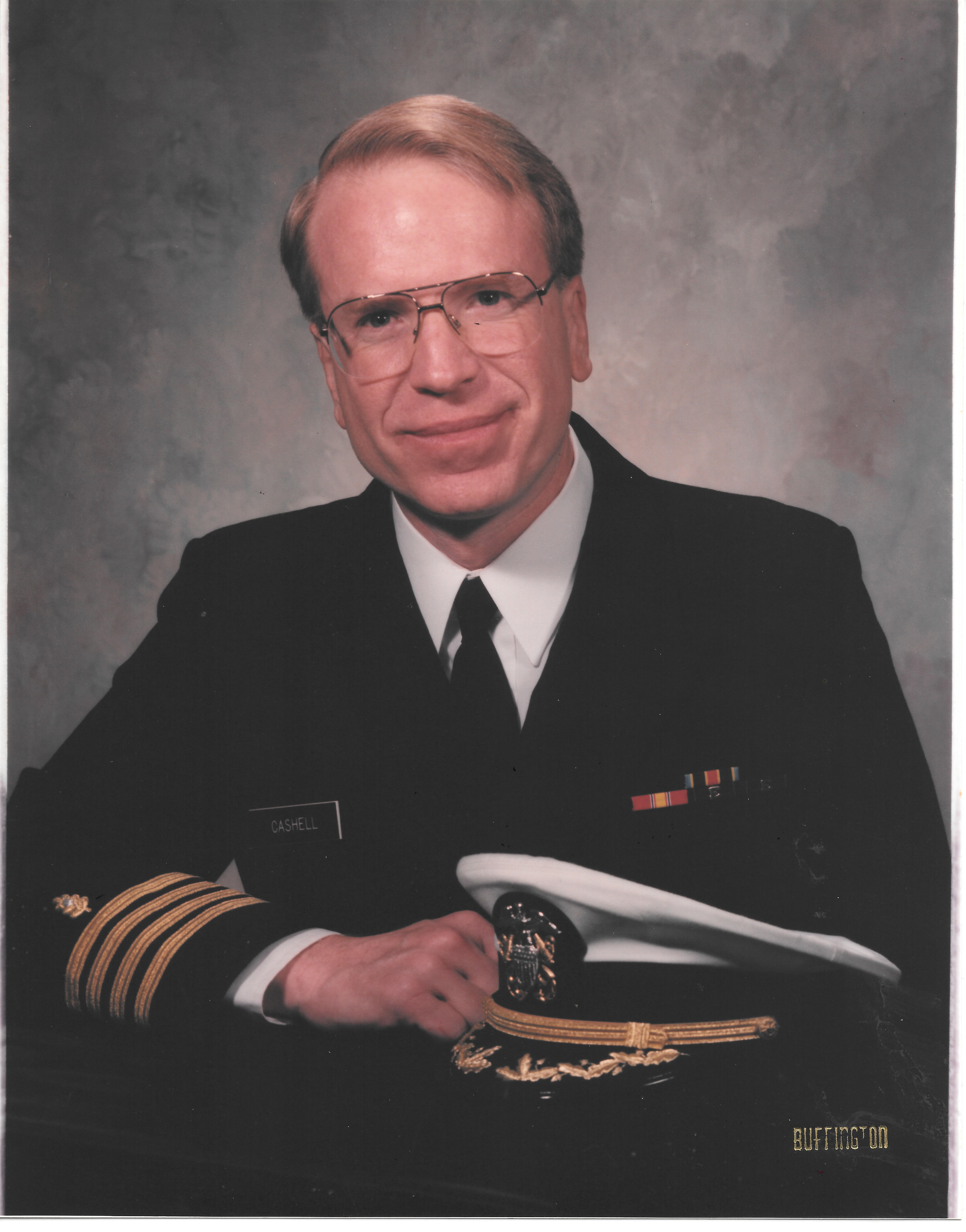From Pets to People, Dr. Cashell Knew Medicine Was For Him May 4, 2022
Written by Aimee O'Grady

Dr. Alan Cashell was introduced to medicine through his father who was a D.C. veterinarian. As a teen, he worked alongside his dad caring for animals and taught himself blood cell analysis.
“When I was 17 or so I bought one of the old brass Bausch & Lomb monocular microscopes for $75. At my dad’s veterinary practice, I taught myself to do white cell differential counts. I also used my dad’s microhematocrit centrifuge and did total white cell counts using a hemocytometer. I had an old prewar German camera back that I fitted onto the microscope so I could photograph the blood cells. I got a high school science fair project out of that by comparing eosinophil counts in dogs with and without worm infections."
While he was drawn to lab work, he didn’t want to work with animals. Dr. Cashell was interested in pursuing human medicine. To spare his family the expense of a costly medical degree, Dr. Cashell earned a Navy scholarship to George Washington University and went to San Diego for his residency.
“I was asked to prioritize the four locations for a pathology residency,” he said. “Since I grew up on the east coast and all my family was there, I put Bethesda, Maryland and Portsmouth, Virginia as my first two choices, so they sent me to San Diego.”
Although he was far from home, he enjoyed the camaraderie of the servicemen he was with. He spent 20 years in the Navy; active duty for eleven years and the remaining years as a reservist. After San Diego, he served in Guam for two years where he worked as the lab director. “During my tours in Guam, Bethesda, and Jacksonville, FL, I practiced general pathology which included autopsies for active duty and civilian death investigations.” He even attended trial for some of the deaths. This work made a lasting impression on him.
“I enjoyed my time in the military and appreciated the interaction I had with World War II and Vietnam veterans. I traveled to many places that I would not have seen otherwise, but I never personally saw combat.”
After his service in Guam, he earned a subspecialty in hematology and from there began working in West Virginia. “I travel between the DC area and West Virginia which is a commute between two cultures,” he said.
Dr. Cashell met his wife Diann when he was at George Washington hospital in 1978. She was an X-ray technologist. She travelled with him throughout his military service. When they stayed in one long location long enough, Diann worked as a math teacher.
The couple adopted three children during their early married years. There oldest was born in San Diego and their second two were born in Korea.
Today, the children are grown and everyone in the family is doing their own thing. Dr. Cashell divides his time between teaching in West Virginia and working in an Anatomy Lab at George Washington Medical School that closed during COVID and he hopes will be reopening this summer.
Elliott, the couples’ oldest child is a Marine veteran who served in Iraq and Afghanistan. He is preparing a move to Toronto with his family. Their youngest child, Michael, lives in Arlington and runs background checks and security clearances. Their daughter, Emily, is a Montessori teacher in Maryland.
Dr. Cashell and Emily have become closer over their shared interested in running. They recently ran the Cherry Blossom 10 miler. It was their first in-person event since the pandemic.
While he ran during his time in the Navy, it wasn’t until he was 60 that he decided to run for pleasure. He jokes about the runners in the back of the pack where he is, “It’s a different world toward the back of 30,000 runners. We’re not like the guys up front. There’s a lot of suffering going on back there. Every year I think that just maybe I can do it one more time, so I’ve signed up for the Marine Corps Marathon again.”
He officially retired from pathology in 2013 and accepted a job in a West Virginia facility managing medication and remained there for six years. “It was much different than my pathology practice where I had limited patient interaction except for performing bone marrow biopsies. I was managing medications for West Virginia Medicaid psychiatry patients. Many of them were living on the margin and they gave me an education with their stories.” His experience in the clinic was a different kind of education for him.
With summer upon us, Dr. Cashell isn’t planning to take much time off. “I will be teaching gross anatomy and hematology to physician assistant students during the summer semester.”
Looking back on his life and career, Dr. Cashell would have liked to have spent more time in the Navy. “I tried to go back on active duty after 9/11 but there was not a demand for pathologists at that time, and it would have been a significant paperwork hassle for the Medical Corps recruiters who would have had to figure out how to bring me back from a retired status.”
Dr. Cashell may not feel fast on the ground while running, but he speeds up in the air as flight instructor. He mainly flew single engines.
Dr. Cashell is a longtime MSDC member. While he misses the in-person meetings that he enjoyed prior to the pandemic, he confesses that he is more available to attend meetings since they became virtual.
Do you know a physician who should be profiled in the MSDC Spotlight Series? Submit a nomination to Robert Hay (hay@msdc.org) for a future story. MSDC membership is encouraged for featured physicians.
